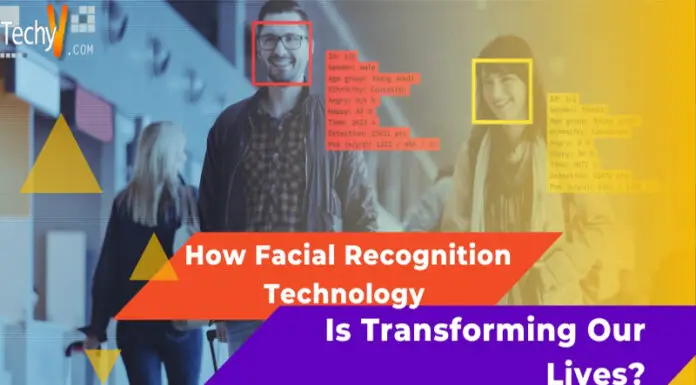From improved prediction accuracy to strengthened security protocols, machine learning (ML) into their business strategies has turned the disorderly software machine learning development process upside down. If companies are pushing more code and data into cloud services or MLDS, they must understand the increased risk of attack. Any organization that wants to protect its customer information or digital assets needs to put in place secure ML systems. In this blog, we’ll examine some basic security principles that should be followed when deploying an MLDS.
https://www.linkedin.com/pulse/5-astonishing-examples-artificial-intelligence-day-
Always Maintain A Safe Chain Of Custody For Your Data
And in today’s digital age, keeping your data safe and sound is a top priority. Establishing a secure chain of custody for your data means that from the moment you create it to its final storage, your data is never exposed. The chain of custody follows your data, securing its location and ownership from start to finish. For legal and compliance purposes, a detailed chain of custody is indispensable. It’s also important for organizations that seek to win their customers ‘trust and confidence. If this piece of information were to change, become corrupted or be lost how would that affect financial operations and an organization’s reputation? A proper chain of custody must be established and maintained to safeguard your data.
Apply Encryption Techniques To Protect Sensitive Information
Data of various kinds flows between people and organizations in the current era. However, with technology moving forward by bounds and leaps daily, data breaches have become more common than ever before. These victims suffer tremendously. You should therefore take the necessary machine learning security steps to ensure ML applications operate securely. This is where encryption comes in. Encryption means data can only be read by those who have the decryption key. Data Encryption provides individuals and organizations with the peace of mind that their data is secure. Now with data breaches ever on the rise, encrypting sensitive information should be everyone’s first priority.
Allow Users To Limit Their Access Based On The User’s Role
For any organization, safeguarding sensitive information is an important objective. Access control can restrict access by user roles and organizational levels. That is to say, only some people have the right to see a piece of information. This way of limiting access protects an organization from the risk that its information might be compromised. Furthermore, they help establish an audit trail that serves to trace unauthorized attempts at access. Access control is a responsible decision that any organization must make with data security in its mind.
Ensure Compliance With Best Practices And Industry Standards
Every day in the digital age, protecting sensitive information is of great importance. Moreover, as cyber-attacks have increasingly turned into mass killings, it’s important to perform security audits periodically so that everyone can operate according to best practices and industry standards. These audits don’t only reveal flaws, they can also remind you to check your own security procedures and see if there are any that have become out of date. This proactive posture allows companies to anticipate possible security breaches and maintain customer trust while at the same time being able to protect their brand in the market. Finally, performing routine audits is a vital way to safeguard the interests of both companies and consumers. Now that the world is in a state of globalization, language barriers constitute an obstacle to communication and progress. It is here that the importance of the output language code comes in. This kind of code allows translations to be made quickly and easily. Communication between people and organizations is more convenient than ever. The language of output provides one hurdle over which to jump; without it, we would be alienated from our native tongues and helpless in communicating with others outside. International business deals or just chit-chat with foreign pen pals–no longer is language a barrier but rather an instrument for understanding.
Third-party Solutions Should Be Carefully Reviewed
As a developer, you know that integrating third-party solutions into your development environment is an important decision. Many third-party solutions can increase efficiency and add functionality, but there’s risk associated too. Any solution needs to be tested thoroughly, evaluating whether it can fit your circumstances and will not introduce flaws in the system. Take time to study providers, case studies and reviews before making a choice. In doing so, you will be confident that the choice is being made in both your team’s and users ‘best interests.

Implement Data Loss Prevention (DLP) Solutions
In today’s digital age, protecting sensitive data has become key in ML services. Most organizations need to deploy some kind of data loss prevention (DLP) solution and other security controls that can be tracked in real-time, which are the only effective means available for protecting confidential information. Firms could immediately identify and respond to security threats with real-time monitoring; this would prevent potential data breaches. These solutions enable the organization to monitor and analyze user activity, thereby guarding data on endpoints and networks. With DLP solutions, a business can keep ahead of the threats and ensure secure data handling that builds trust with customers and other stakeholders.
Final Thoughts
Thus, in conclusion, data security is an integral part of any successful system. Through building a trustworthy “chain of custody”, encrypting data and transmitted information, implementing control mechanisms that restrict access depending on the user role or organizational level, and performing periodic security evaluations to make sure things are up to date with industry best practices. Only then should you consider integrating third-party solutions into your development environment only after thoroughly appraising them both upon adoption and during ongoing


















